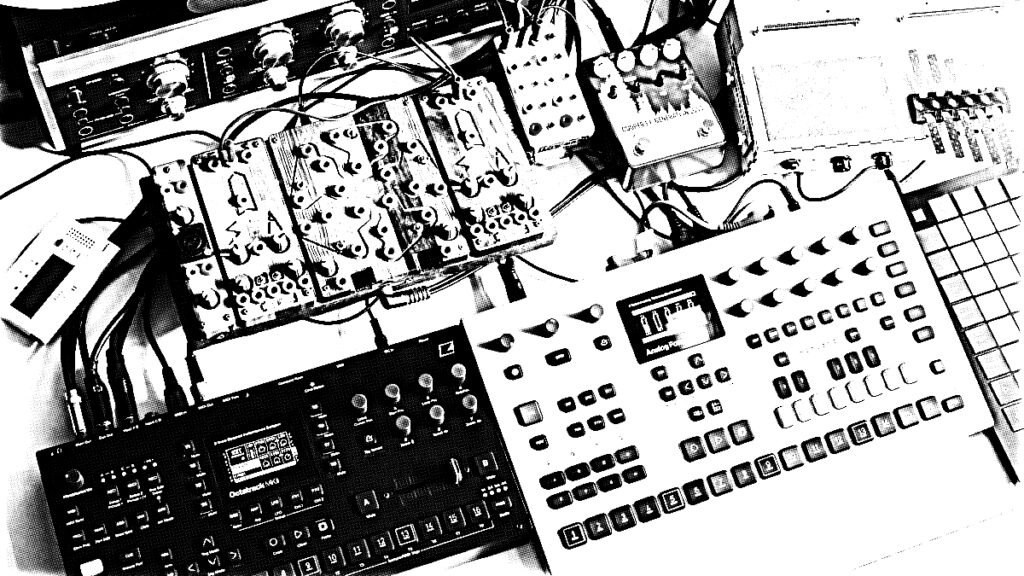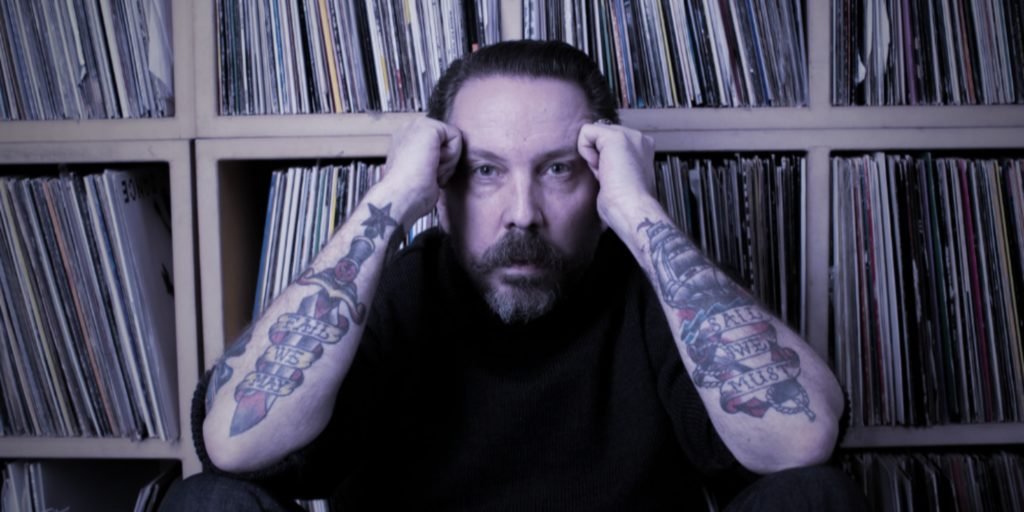
I’ve covered Jogging House on the blog before. My introduction to Boris Potschubay’s strangely beautiful music was through his 2019 album Lure. Then, I called his music “a quiet resistance,” not far from a couple of phrases Boris uses in the interview transcript below. His music evokes the feeling of an earlier time — the warmth of childhood, perhaps — while projecting that feeling into the future. Thus, Jogging House’s music is both nostalgic and hopeful. It doesn’t just look back and say, “life felt better then.” These songs also tell us, “it can feel nice like that again.”
I love Boris’s sonic aspirations of a “peaceful revolt.” The idea steeps resistance in a bath of optimism and supports my belief that there’s no role for nihilism in the esthetic exchange. Why fight if there’s no peace in our future? Why create art if there’s no utopian vision? What’s the artist’s role if it’s not to imagine possibilities? Maybe I’m reading too much into it, but these questions hum inside my head after I listen to Jogging House’s recent album, Fiber.
Boris’s output as Jogging House is prolific (he’s released at least one more album since this conversation), but it’s never samey. The songs may seem to blur together if you listen to them separately, such as compiled randomly in a ‘chill out’ playlist or when the shuffle switch is on. But Jogging House makes albums, and these are meant for top-to-bottom listening in a single sitting. Fiber is especially effective as it ebbs and flows like the ocean tide photographed for its cover. The warmth of Boris’s chosen tones and his loose, hardware-based method is a tight thread that ties his sound together, but each track has its own story.
At long last, I spoke with Boris of Jogging House about his creative process and inspirations. We talked a lot about names — how he sees his artistic ‘job title’ and, as in the transcript excerpt below, what he wants his song titles to evoke in a listener. But we also talk about making music with loops, the marketing necessity of process videos, the learned restraint in his music and life, and how hip hop is still Boris’s favorite music. You can listen to our entire conversation in the embedded audio player. Please enjoy.
❋-❋-❋-❋-❋-❋-❋-❋
JH: There is something reflected in the titles of my tracks. Sometimes it’s like the ocean. It’s just what the sounds make me think of at that very moment as I make the music, and then I often have some weird picture in my head. It’s like a memory that I never had. The sounds remind me of something, but not a specific thing. It’s not a real memory —just something that pops into my head when I listen. It could be anything, really.
MD: That’s interesting to hear that the titles do relate to memories evoked by the songs.
JH: Yeah, or feelings.
MD: “Okay” is a funny song title. And “Revenge.”
JH: “Revenge” is my favorite title. Definitely. It’s one of my favorites in a while. I’m actually surprised that I didn’t pick it earlier.
MD: So the song made you think of revenge,
JH: Yeah, kind of, because the song is … I mean, it’s not a revenge. It doesn’t have anything ‘revenge’ about it. It’s very peaceful, I guess. I don’t remember the exact day, but I was probably annoyed by something. And, of course, making that song didn’t change anything, but it still felt like a good revenge. Maybe it was a sucky day, but still, I got that track out of it. It’s like the peaceful revolt idea of revenge, the quiet revolt. But it’s such a strong word. I need some contrast. I like to have these strong, almost visceral track names matched with something peaceful. I really like that combination. I find it interesting.
MD: The titles remind me of the Talking Heads’ Fear of Music album. “Air” and “Animals.” And “Paper” is a song title. But with David Byrne, the reason the song is called “Animals” is because he’s singing about how cool animals are.
JH: I like basic, minimal ideas based around these one-word titles. I like to be vague. I think if you give half a sentence as a title or “I Love You” or something like that, it becomes deeply embedded. The title steers the perception of the track in a specific direction. If it’s vague, the title can be a strong word but without any context, like “Revenge,” for example. But I think it’s impossible not to have any connotation when you read it without the music. If you read the word on a piece of paper somewhere on the street, it evokes some sort of feeling for you. It’s a very human thing.
MD: Right.
JH: But it could still mean anything. A million or a trillion stories could have revenge in them, and they would be all very different. So it’s something that is strong but without any sense of direction. Revenge against whom? I don’t know. It’s completely up to you what you think of this. It’s the same if I call something “Fire.” You have a million images. You could imagine lighting a candle or burning your house down. It can go from simple and charming to absolutely horrible and destructive. It’s completely open. The word itself is very strong, but it’s without context.
MD: But then the music adds a hint of context.
JH: Yes, maybe. Maybe.

MD: It’s like you see this title “Revenge,” and, as you said, your first thought is, “This is a harsh word.” A person comes up with their own ideas of what revenge is to them. And then they listen to the song; it colors their interpretation of how you may be using this word. It’s still their own interpretation because there’s no way the listener is going to know your story about feeling angry on the day you wrote it. So it’s almost like the idea of the ‘third mind,’ if you know about that concept.
JH: No, I don’t.
MD: This artist and writer, Brion Gysin, came up with this with William Burroughs. It’s the idea that when two people collaborate, they create a ‘third mind.’ But you can take it further in that you don’t need another person. In their case, it was cutting up words and text and rearranging them, and finding inspiration from random things. You create a ‘third mind’ through that. So, basically, the ‘third mind’ generates ideas that would not have appeared without the juxtaposition of two elements. It’s almost like you’re summoning that concept a little bit if people listen to it that way. But, obviously, some people aren’t going to pay attention to the titles.
JH: That’s also totally fine. I’m horrible with titles. I never know what a track is called. I have a hard time remembering track titles. So that’s completely fine with me. But I also like to give these tiny images, sprinkle them over the album. You might pick up on them, or maybe not. Maybe they will catch you off guard and make you think of something. Or maybe you think it’s just random words. That’s also completely fine with me. The only thing I don’t want is to give is a specific direction of what you should feel or think. That’s the only thing that I don’t want to do.
→ Jogging House’s Fiber and many other albums are available on Bandcamp and the streaming places. You can also watch illuminating videos of Jogging House making his music on his website.
